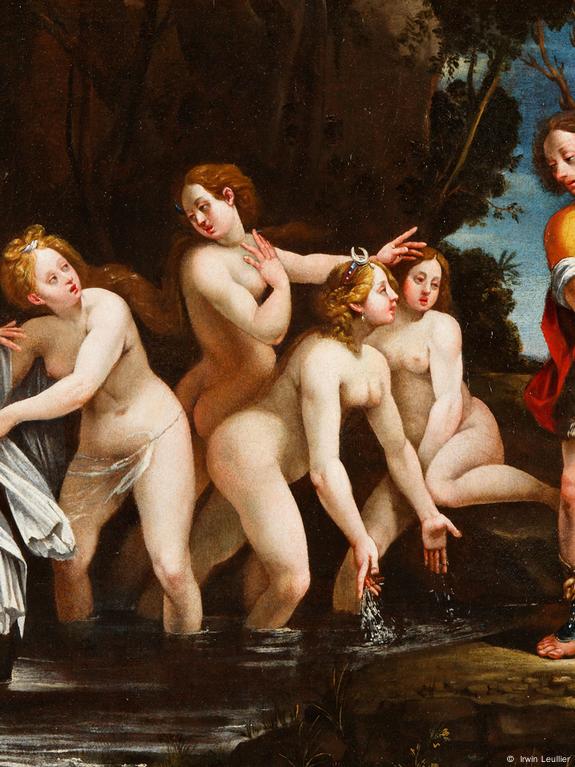“Shameless bodies in total submission, waiting to take part in a lewd drunken game! A banquet indeed, not to honor consuls or tribunes, but to deride them.” —Valerius Maximus The Vesuvius was not the only thing burning hot in Pompeii. This ancient Roman city was also popular because of its infamous Lupanare Grande (Great Brothel).
Isabel Cara

“Shameless bodies in total submission, waiting to take part in a lewd drunken game! A banquet indeed, not to honor consuls or tribunes, but to deride them.”
Valerius Maximus
The Vesuvius was not the only thing burning hot in Pompeii. This ancient Roman city was also popular because of its infamous Lupanare Grande (Great Brothel). Anyone in search of a wanton night knew that Pompeii was the place to go. Brothels received this name because of the lupas (she-wolves): Greek slaves that had taken the position of prostitutes. These places had ten rooms: the five on the ground floor had rock beds and were intended for men who were short on money, while rooms on the top level consisted of a balcony and a separate entrance to provide more privacy for wealthier clients.

The rooms had another significant detail. As funny as this might seem, the walls were painted with drawings of penises that served as sort of guide for men to find strategic pleasure points. A lupanar was usually decorated with pornographic images that depicted couples having sex in various positions.
It’s unknown whether these images were drawn to portray what happened inside, to whet the guest’s desires, or just as simple decoration. I think it was a little bit of everything.

But the rooms weren’t the only amenities. The suburban baths were another space, similar to the bathing spas or hot springs we know today. The illustrations decorating the walls of this site had a higher degree of intensity when it comes to sex: they depicted orgies, threesomes, and sodomy. These images were supposed to help visitors identify prostitutes and where to find them in the baths.
According to professor Antonio Varone, Pompeii’s current director of excavations, this place was particularly popular among sailors who had recently returned from journeys overseas. So it’s no surprise that the bath was located in the street that led to the Porta Marina (the main passageway that connected the city to the water).

The site was divided in three: the dressing room (apodyterium), the cold baths (frigidarium), and the lukewarm room (tepidarium). There was only one set of dressing rooms, so it is believed that either men or women would strip in the same place, which, no doubt, inflamed visitors’ passions.

There is one room in particular that is especially popular. It is called the House of the Centenarian. Apart from being decorated with erotic paintings and a nymph monument, this room’s walls also contain the most exact representations of the Vesuvius. There’s also a secret room known as “room 34.” Its walls are decorated with frescoes of fine artistic quality and eroticism.

This room is believed to have been a luxurious “sex club” used by the upper echelons to delight their guests. There is a hole in one of the walls through which others could peep on the private party that was being thrown inside. Although these are no more than speculations, the elite’s fondness for excess and pleasure is widely known among historians and archeologists. Another common practice was to scribble messages on the walls, which pointed out the different sexual skills of prostitutes and clients. What can I say? Gossip has always been part of all civilizations.
In ancient Rome, adultery was an acceptable, and even encouraged, practice among men (while it was forbidden for women). It was very common to see lots of men in the brothels. According to Kelly Olson, a Western University expert on gender roles in ancient times, married men could sleep with whoever they wanted as long as they weren’t married to another man. Whereas married women would be punished if they were caught with a man that was not their husband.